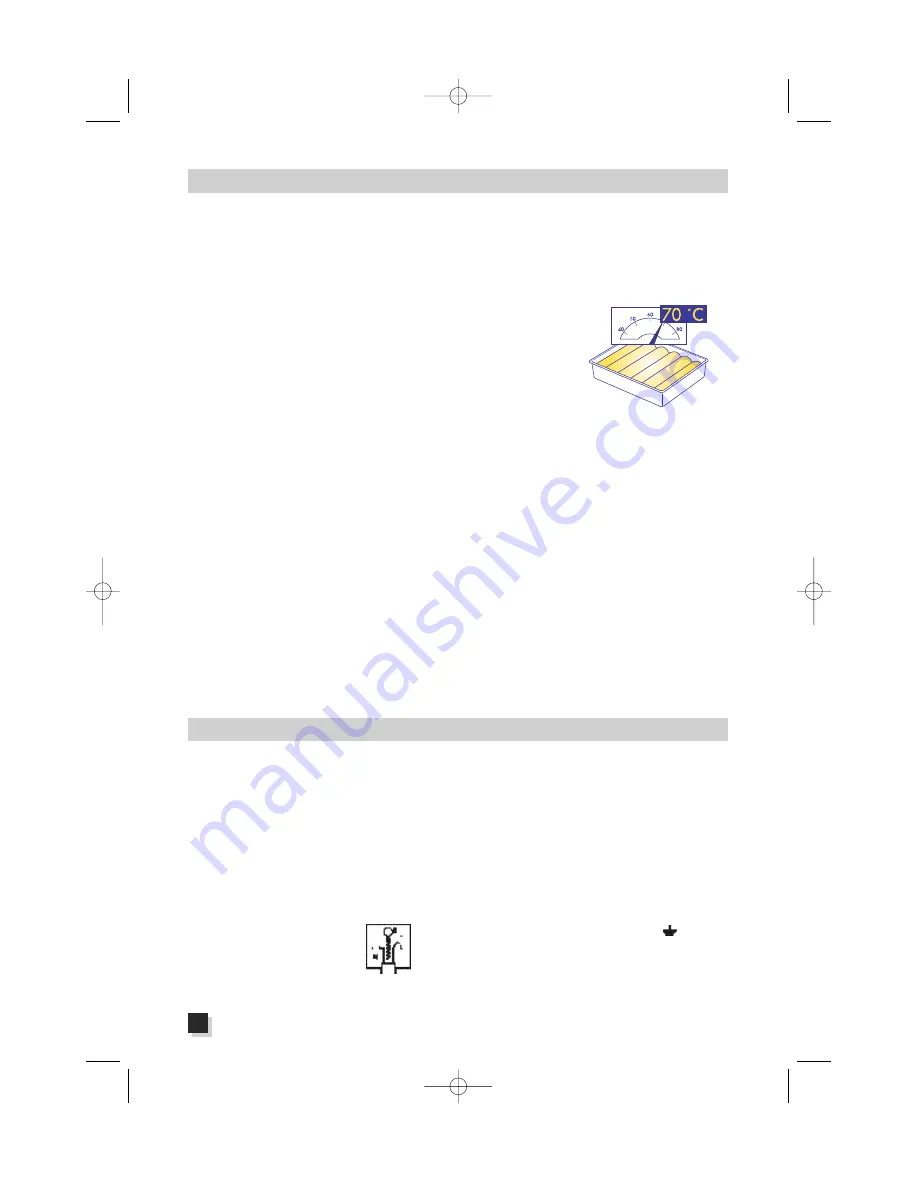
30
H E A T I N G
Heating food in a microwave oven is much quicker and energy efficient than traditional methods.
• We recommend that you heat foodstuffs (especially if they are frozen) to a temperature of at least
70° C. (it must be piping hot!). Leave to stand for a few minutes as you will not be able to eat that
food immediately because it will be too hot.
• This will ensure that any possible bacteria present in food will
have been killed.
• To heat pre-cooked or frozen foods, follow these rules:
- remove the food from its metal containers;
- cover it with plastic wrap (the clear-film type suitable for microwave ovens) or wax paper; in
this way, all the food’s natural flavour will be preserved and the oven will stay cleaner; you may
also cover the food with an upside-down plate;
- if possible, stir or turn the food over frequently so as to speed up the heating process and keep
the heat uniform at the same time;
- follow the cooking times listed with great caution; remember that under certain conditions the
timings given must be lengthened
• Frozen foods must be defrosted before the heating process begins. The lower the food’s initial tem-
perature, the longer the time needed for heating.
• Foodstuffs and drinks may be heated briefly in paper or plastic containers. In any event, howev-
er, such containers may become misshapen if the heating time is too long.
WARNING
- THIS APPLIANCE MUST BE EARTHED
IMPORTANT
The wires in the mains lead are coloured in accordance with the
following code:
Green and yellow:
Earth
Blue:
Neutral
Brown:
Live
As the colours of the wires in the mains lead may not correspond
with the coloured markings identifying the terminals in your plug,
proceed as follows:
The green and yellow wire must be connected to the terminal in the
plug marked with the letter E or the earth symbol
or coloured
green or green and yellow.
The blue wire must be connected to the terminal marked with the
letter N or coloured black.
The brown wire must be connected to the terminal marked with the
letter L or coloured red.
E L E C T R I C A L C O N N E C T I O N ( U . K . O N L Y )
A) If your appliance comes fitted with a plug, it will incorporate
a 13 Amp fuse. If it does not fit your socket, the plug should
be cut off from the mains lead, and an appropriate plug
fitted, as below.
WARNING: Very carefully dispose of the cut off plug after
removing the fuse: do not insert in a 13 Amp socket
elsewhere in the house as this could cause a shock hazard.
With alternative plugs not incorporating a fuse, the circuit must be
protected by a 15 Amp fuse.
If the plug is a moulded-on type, the fuse cover must be re-
fitted when changing the fuse using a 13 Amp Asta approved
fuse to BS 1362. In the event of losing the fuse cover, the plug
must NOT be used until a replacement fuse cover can be
obtained from your nearest electrical dealer. The colour of the
correct replacement fuse cover is that as marked on the base
of the plug.
B)
If your appliance is not fitted with a plug, please follow the
instructions provided below:
GB-069IDL 8-04-2004 16:25 Pagina 30
















